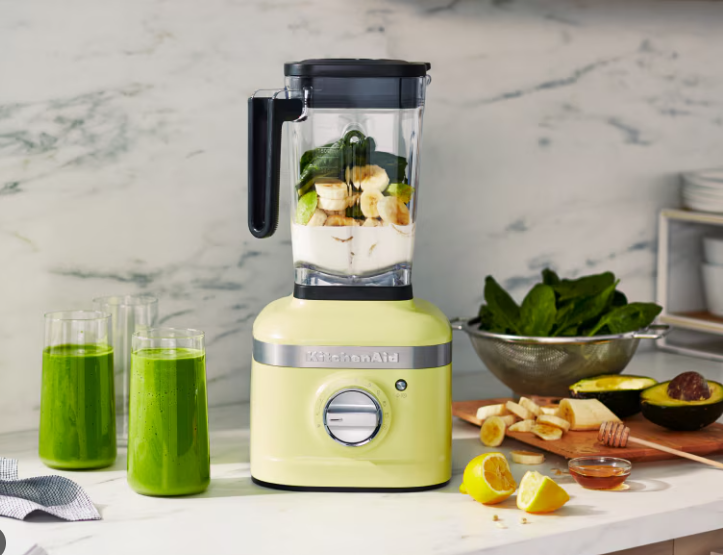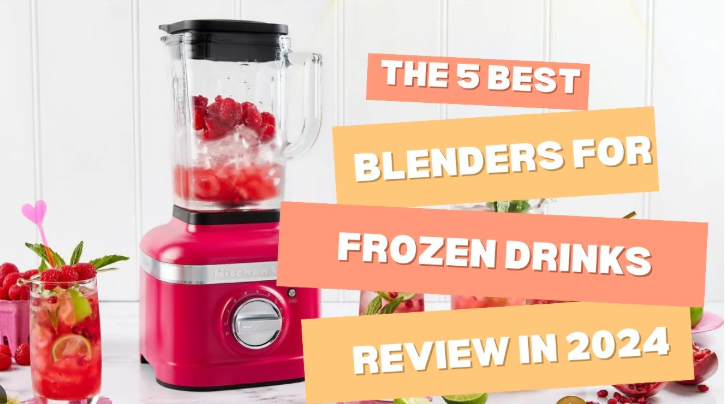Choosing between a Vitamix and a Ninja blender can be a tough decision when searching for the best blender for your kitchen. Both brands are popular, but they cater to different needs, budgets, and blending tasks. In this comprehensive comparison of Vitamix vs Ninja blenders, we’ll break down their performance, features, durability, and value to help you decide. Whether you’re making smoothies, soups, or frozen drinks, we’ve got you covered with insights on blender setup, blender maintenance, and more. For additional blender reviews and tips, check out blender reviews.
Overview: Vitamix vs Ninja Blender
Vitamix blenders are renowned for their premium build, powerful motors, and versatility, often considered the gold standard in professional and home kitchens. Ninja blenders, on the other hand, are budget-friendly, versatile, and packed with accessories, making them popular for casual users. This Vitamix vs Ninja comparison will explore key differences in performance, design, and suitability for various tasks, helping you find the best blender for smoothies, sauces, or nut butters.
Key Features Comparison
Before diving into specific models, here’s a quick look at how Vitamix and Ninja blenders compare in terms of essential features for blending:
- Motor Power: Vitamix offers 1200–1500 watts for superior performance; Ninja ranges from 1000–1500 watts, sufficient for most tasks but less robust for heavy-duty blending.
- Blade Design: Vitamix uses fixed, blunt stainless steel blades for pulverizing; Ninja uses removable, sharp stacked blades that require careful handling.
- Jar Durability: Vitamix jars are made of durable Tritan plastic; Ninja’s BPA-free plastic jars may crack under stress.
- Controls: Vitamix offers variable speed dials and presets for precision; Ninja relies on presets and limited manual controls.
- Warranty: Vitamix provides 7–10 years, ensuring long blender motor life; Ninja offers 1–2 years, reflecting lower durability.
- Price: Vitamix ranges from $300–$650; Ninja ranges from $80–$240, appealing to budget-conscious buyers.

Vitamix vs Ninja: Head-to-Head Comparison
Let’s compare two popular models: the Vitamix A3500 (a high-end choice) and the Ninja Professional Plus Kitchen System (a versatile mid-range option). This Vitamix vs Ninja analysis covers performance, ease of use, durability, and value for common blending tasks.
1. Performance for Smoothies
Vitamix A3500: With a 1500-watt (2.2 HP) motor, the Vitamix A3500 excels at creating silky smoothies. Its blunt blades and tapered jar design create a powerful vortex, pulverizing tough ingredients like kale, seeds, and frozen fruit in 30–45 seconds. Testing shows it leaves no grainy bits, even with chia seeds or spinach, producing a creamy texture.
Ninja Professional Plus: The Ninja’s 1400-watt motor handles smoothies well, with a smoothie preset that adjusts speed automatically. However, its sharp, stacked blade design may leave slight graininess with fibrous greens or seeds, requiring longer blending (up to 60 seconds) or straining for a smoother result.
Verdict: Vitamix wins for smoothies, delivering restaurant-quality texture. Ninja is adequate for casual users but may not match Vitamix’s smoothness.
2. Ice Crushing and Frozen Drinks
Vitamix A3500: The Vitamix crushes ice into a snow-like consistency in under 30 seconds, thanks to its powerful motor and Frozen Drinks preset. It blends frozen cocktails like margaritas effortlessly, with no chunks, and can heat ingredients via friction for hot soups in 5 minutes.
Ninja Professional Plus: Ninja’s ice-crush preset produces fine ice for slushies in about 20–30 seconds, but it’s not recommended for hot liquids due to safety concerns. It performs well for frozen drinks but may struggle with very fibrous fruits like pineapple.
Verdict: Vitamix is superior for consistent ice crushing and versatility, especially for hot-cold blending. Ninja is solid for frozen drinks but less versatile.
3. Durability and Blender Motor Life
Vitamix A3500: Built in the USA with aircraft-grade stainless steel blades and a durable Tritan jar, the Vitamix A3500 is designed to last. Stress tests show its jar withstands drops without cracking, and its 10-year warranty ensures long-term reliability. Users report 15–20 years of daily use with minimal wear.
Ninja Professional Plus: Ninja’s plastic jar and removable blade assembly are less durable, with reports of cracking after drops or heavy use. Its 1-year warranty reflects lower blender motor life, though some users report 5–10 years of moderate use.
Verdict: Vitamix is far more durable, ideal for frequent, heavy use. Ninja suits occasional use but may need replacement sooner.
4. Ease of Use and Blender Setup
Vitamix A3500: The Vitamix is easy to connect blender components—just lock the jar onto the base and plug in. Its touchscreen controls, variable speeds (1–10), and presets (smoothie, frozen drinks, soups) offer precision. The included tamper helps process thick blends. Self-cleaning mode simplifies cleanup.
Ninja Professional Plus: Ninja’s setup is straightforward but requires attaching the blade assembly, which can be cumbersome. Its BlendSense technology automates blending, but limited manual controls reduce flexibility. The removable blades make cleaning easier but require careful handling for blender safety.
Verdict: Vitamix offers more control and easier maintenance, while Ninja’s blade assembly adds complexity but simplifies jar cleaning.
5. Versatility and Accessories
Vitamix A3500: With Self-Detect technology, the A3500 adjusts settings for different jar sizes (8–64 oz). It’s ideal for smoothies, soups, nut butters, and dough, though accessories like food processor bowls are sold separately. Its fixed blades are less versatile for swapping containers.
Ninja Professional Plus: The Ninja shines with accessories, including a 72-ounce pitcher, two 24-ounce personal cups, and an 8-cup food processor bowl. It’s great for smoothies, chopping, and dough, making it a multi-tasker for budget users.
Verdict: Ninja wins for accessory variety, ideal for diverse tasks. Vitamix is more specialized but excels in core blending functions.
6. Price and Value
Vitamix A3500: Priced at ~$600, it’s a premium investment but offers unmatched performance, durability, and a 10-year warranty, making it cost-effective for heavy users. Refurbished models (~$300) are a budget-friendly option.
Ninja Professional Plus: At ~$140, it’s affordable and includes multiple attachments, offering great value for casual users or those needing single-serve options.
Verdict: Ninja is better for budget buyers; Vitamix is worth it for frequent, high-performance blending.
Blender Setup and How to Use a Blender
Proper blender setup ensures optimal performance for both Vitamix and Ninja blenders. Follow these steps to connect your blender:
- Unpack and Clean: Rinse the jar, lid, and blades. Wipe the base with a damp cloth.
- Assemble: For Vitamix, lock the jar onto the base. For Ninja, attach the blade assembly to the jar or cup before securing to the base.
- Test Power: Place near an outlet and test with water to confirm functionality.
- Layer Ingredients: Add liquids first, then soft ingredients, followed by hard or frozen items for a smooth blend.
How to Use a Blender Tips:
- Vitamix: Use the variable speed dial for precise control or presets for automated blending. Start low, then increase speed gradually.
- Ninja: Use presets for smoothies or ice crushing. Pulse manually for tough ingredients like ice or nuts.
- General Tip: Add liquid gradually to avoid watery blends, especially with Ninja’s larger jars.
Blender Troubleshooting
Both brands may encounter issues. Here’s how to handle common blender troubleshooting problems:
- Blender Won’t Start: Ensure the jar is locked (Vitamix) or blades are securely attached (Ninja). Check the power cord and outlet.
- Stuck Ingredients: For Vitamix, use the tamper. For Ninja, pause and shake the jar or add more liquid.
- Overheating: Stop blending and cool for 20–30 minutes. Avoid overloading, especially with Ninja’s lower-powered models.
- Grainy Texture: Blend longer (up to 60 seconds) or strain. Vitamix typically avoids this issue; Ninja may require extra blending.
For more blender troubleshooting tips, visit blending tips.
Blender Maintenance for Longevity
Regular blender maintenance extends blender motor life. Follow these tips:
- Vitamix: Blend warm water with a drop of dish soap on low for self-cleaning. Rinse thoroughly and dry before storing.
- Ninja: Remove blades and wash separately with a brush to avoid cuts. Dishwasher-safe parts simplify cleaning.
- Inspect Regularly: Check Vitamix seals or Ninja blades for wear, especially after heavy use like nut butters or ice crushing.
- Store Dry: Ensure all parts are dry to prevent mold or rust.
Blender Safety Tips
Blender safety is crucial for both brands:
- Vitamix: Secure the lid tightly and avoid overfilling. Use the tamper only with the lid on.
- Ninja: Handle sharp blades carefully during cleaning or assembly to avoid cuts.
- General: Place on a stable, non-slip surface. Unplug when not in use. Avoid blending hot liquids in Ninja jars to prevent pressure buildup.
Best Blender for Specific Needs
Vitamix A3500 is the best blender for smoothies, hot soups, nut butters, and frequent use, thanks to its power, durability, and smooth results. It’s ideal for health enthusiasts, professional chefs, or those prioritizing long-term investment.
Ninja Professional Plus is the best blender for value, offering versatility with multiple jars and accessories at a lower price. It’s great for casual users, small batches, or those needing a portable blender for smoothies on the go.

Pros and Cons Summary
Vitamix A3500:
- Pros: Superior blending performance, durable build, long warranty, versatile for hot and cold recipes, silky textures.
- Cons: Expensive, larger footprint, fewer accessories included.
Ninja Professional Plus:
- Pros: Affordable, multiple accessories, good for casual blending, easy to clean.
- Cons: Less durable, grainier blends with fibrous ingredients, shorter warranty, not suitable for hot blending.
Conclusion: Vitamix vs Ninja – Which Should You Choose?
In the Vitamix vs Ninja blender showdown, your choice depends on your budget, blending frequency, and desired results. The Vitamix A3500 is the best blender for smoothies, frozen drinks, and heavy-duty tasks, offering unmatched durability and performance for serious home cooks or professionals. Its higher price is justified by a longer blender motor life and silky blends. The Ninja Professional Plus Kitchen System is a fantastic budget option, delivering versatility and decent performance for casual users or those needing single-serve options.
For more guidance on choosing the best blender for your needs, explore blender guide. Whether you pick Vitamix or Ninja, proper blender setup, use, and blender maintenance will ensure delicious results every time!